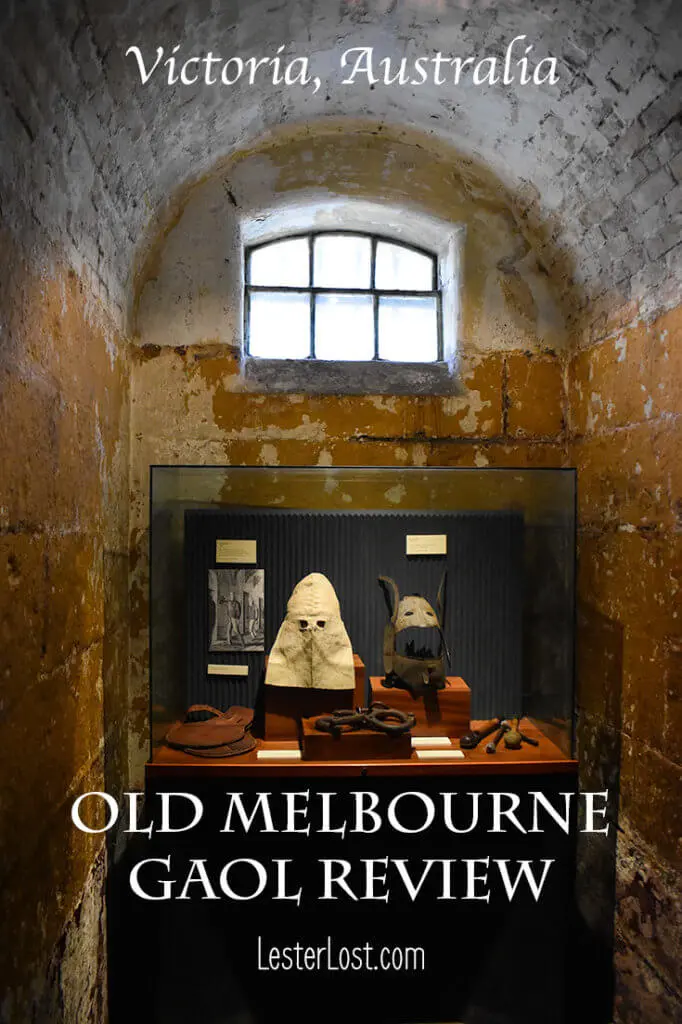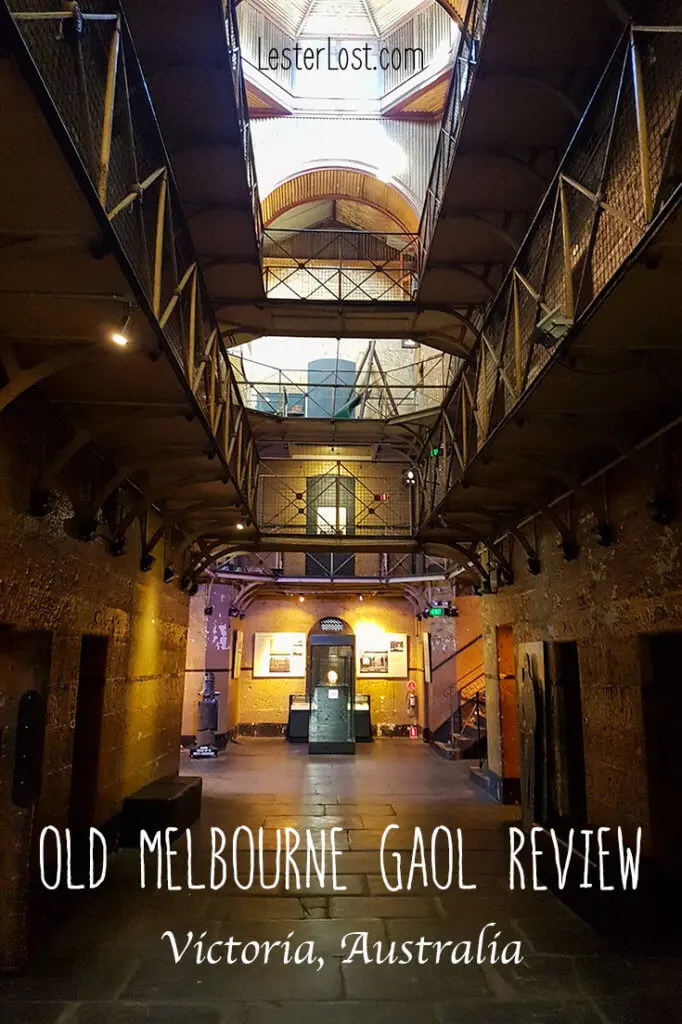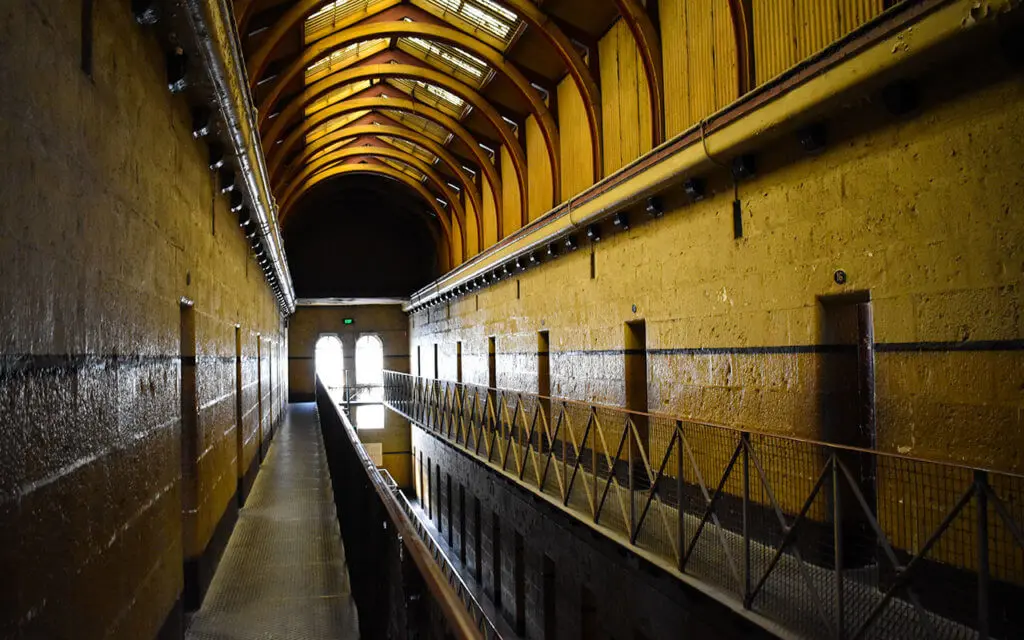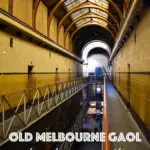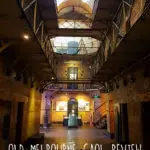Some of the earliest buildings constructed on Australian shores by the British empire were prisons and Australian colonial history is one of hardship. To help you plan your Melbourne sightseeing, this Old Melbourne Gaol review details the fascinating history behind the bluestone walls.
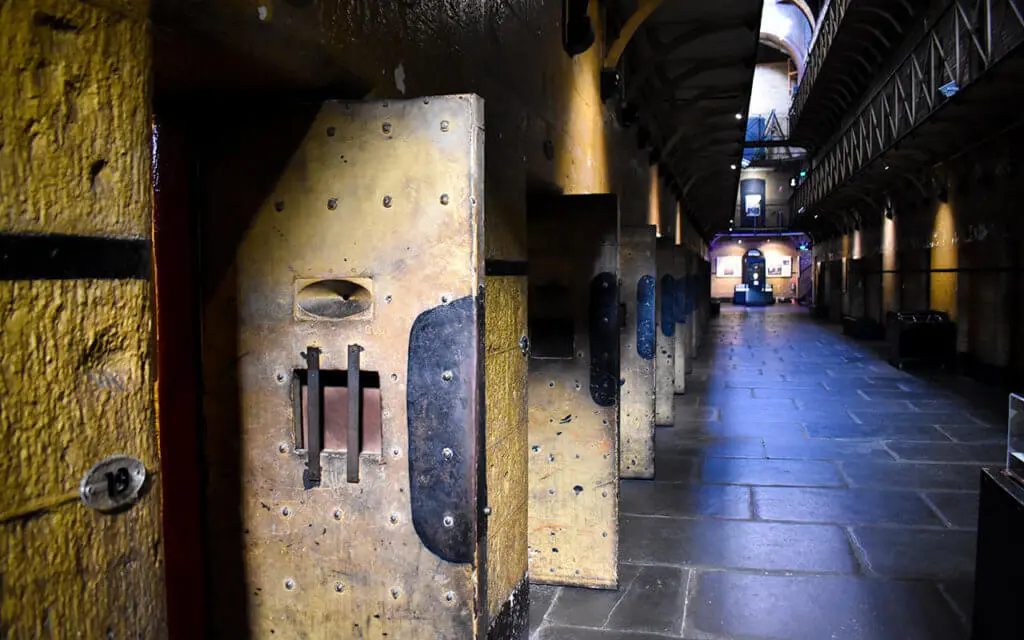
Table of Contents
Old Melbourne Gaol Review
The city of Melbourne was founded almost forty years after Sydney, and has a history as a somewhat wild and dangerous city. With equally hard colonial times, Melbourne history shares in the dark and violent convict past of Australia.
As part of my Melbourne activities, I was curious to discover the Old Melbourne Gaol. Having done a number of prison tours in Fremantle and visited Australian penal colonies in Port Arthur and Maria Island in Tasmania, I wondered where Melbourne Gaol fits in.
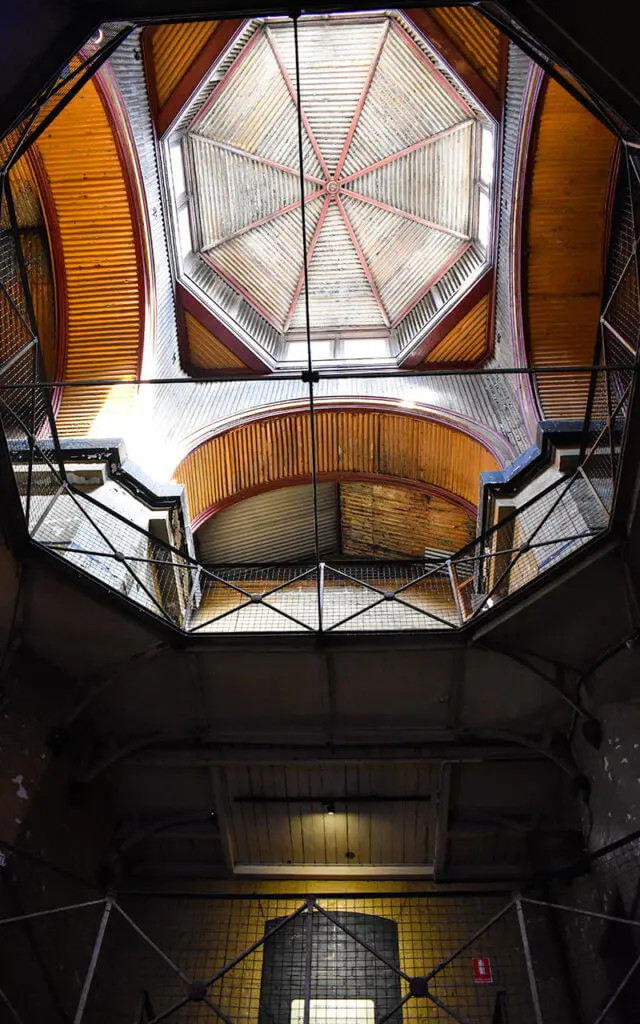
How to get to the Old Melbourne Gaol
The oldest prison in Melbourne is in the city, on Russell Street, between Victoria Street and LaTrobe Street. It’s a pleasant walk with a view of some skyscrapers from the CBD and it’s ten minutes walking distance from the Queen Victoria Markets. Other Melbourne CBD attractions in that area include some interesting street art.
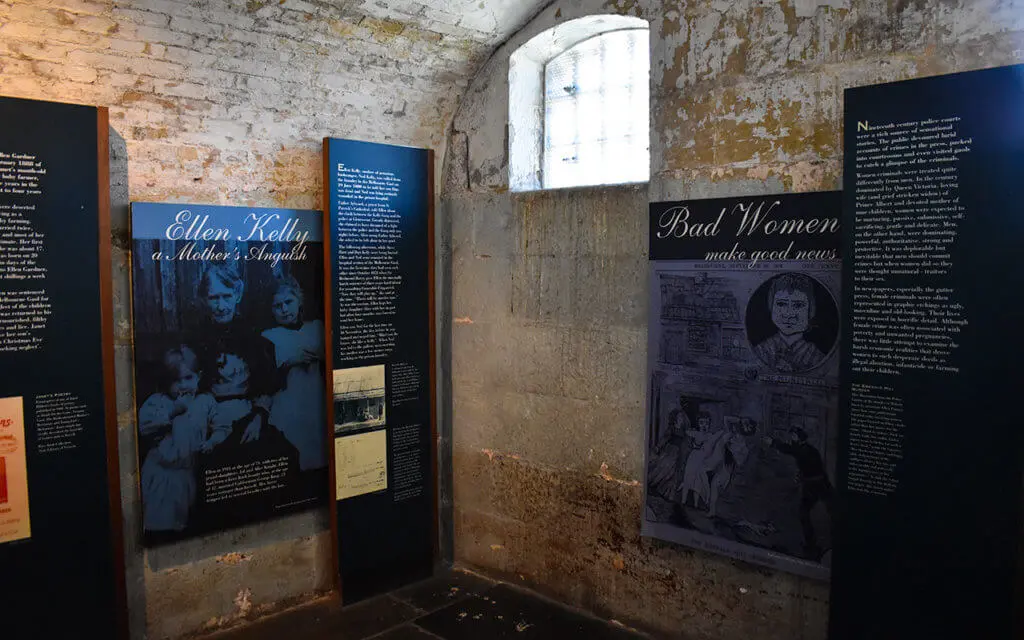
The building is next to the Old City Watch House and City Courts Buildings. The bluestone building appears small and out of sync with the neighbouring modern architecture, but think of it as a commanding figure on the Melbourne skyline. On old photos of Melbourne, it had a very daunting presence. Today, some sections of the prison are part of RMIT University and are not open to the public.
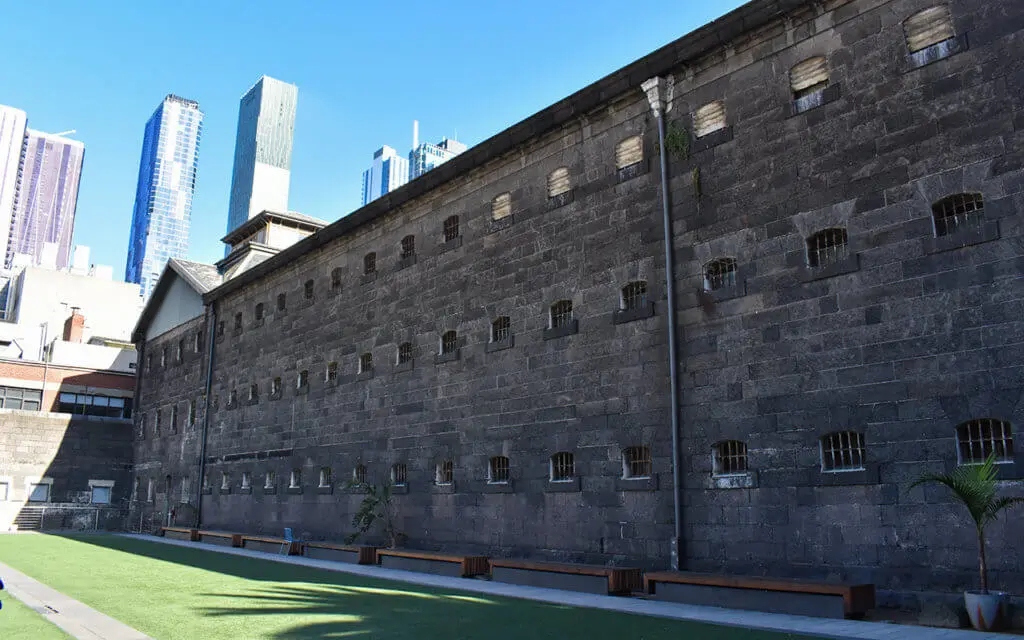
The main cell block is open to visits and an extraordinary step back in time. This is also the place where you can learn about the Ned Kelly story.
Where to Stay in Melbourne
It’s hard to pick the best place to stay in Melbourne, there are so many options. I like to stay in or near the CBD.
History of the Old Melbourne Gaol
The history of Australia always tells stories of jail time and incarceration, so it makes sense to visit the Old Melbourne Gaol as part of your Melbourne experience. The jail operated from 1842 to 1924, with its construction starting in 1839, only four years after the foundation of Melbourne. During this period, the building housed dangerous criminals, petty thieves, the homeless and the mentally ill.
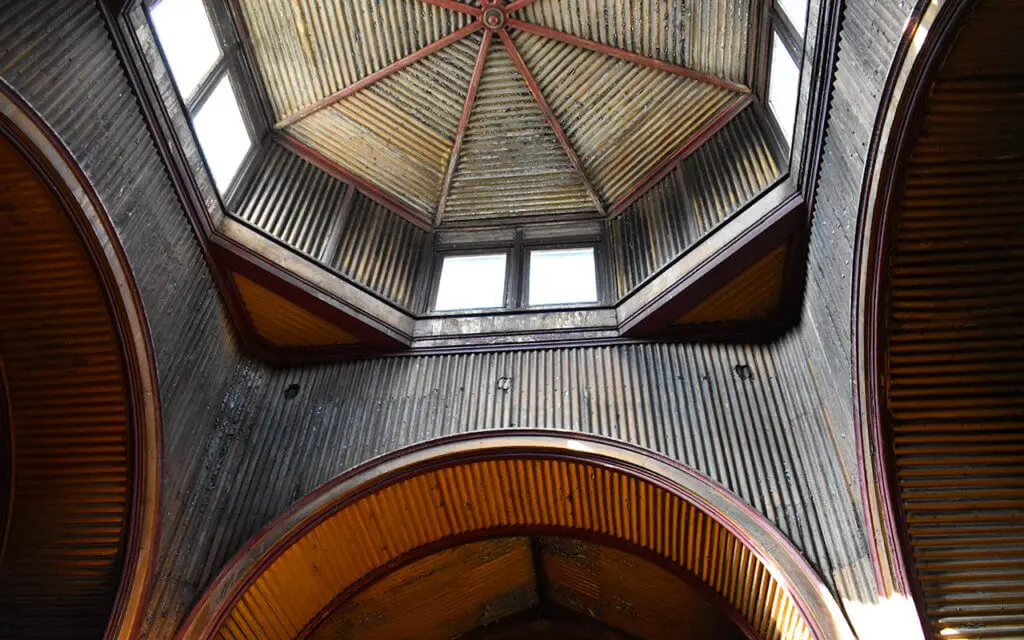
The first prisoners arrived in 1845 and by 1850, the prison was already overcrowded. With the discovery of gold in Victoria, population grew and lawlessness increased in Melbourne, and the building was expanded in 1852. A block for female prisoners was completed in 1864 but it’s not currently open to the public.
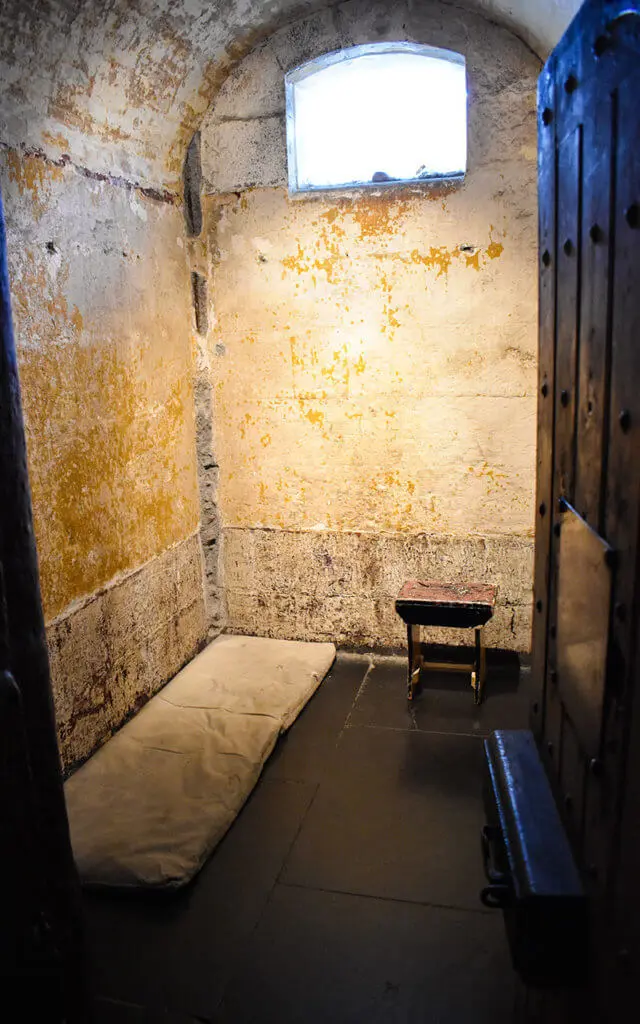
At that time, the prison occupied an entire city block, with exercise yards, a hospital, a chapel, a bath house and staff accommodation. There was a house for the chief warders and their families and up to 17 houses for gaolers were built on Swanston Street in 1860. In the previous decade, gaolers and their families lived within the prison walls…
Australian Prisoners
Up to 20 children stayed in the prison, some as young as three. Babies were allowed to stay with their mothers and young children were usually imprisoned for theft or vagrancy.
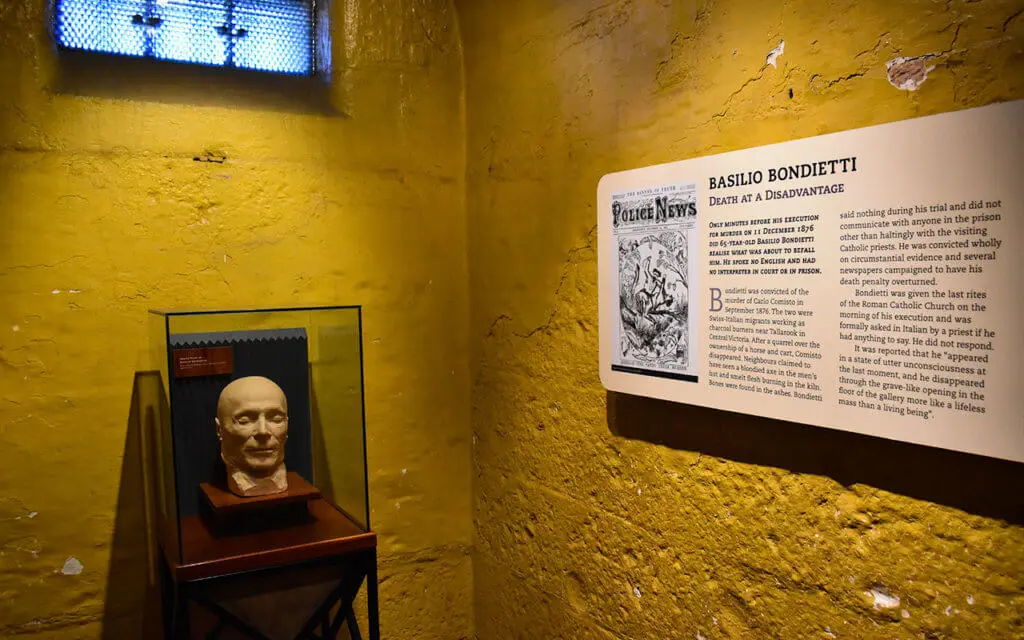
An important character in Australian crime history was incarcerated here, read on for more information on Ned Kelly.
Australian Criminals
There was a classification system within the Australian prison system. The more difficult criminals would stay in solitary confinement on the ground floor, 23 hours a day in their cell. Communication with other inmates was banned and they were made to wear a “silent mask” or calico hood.
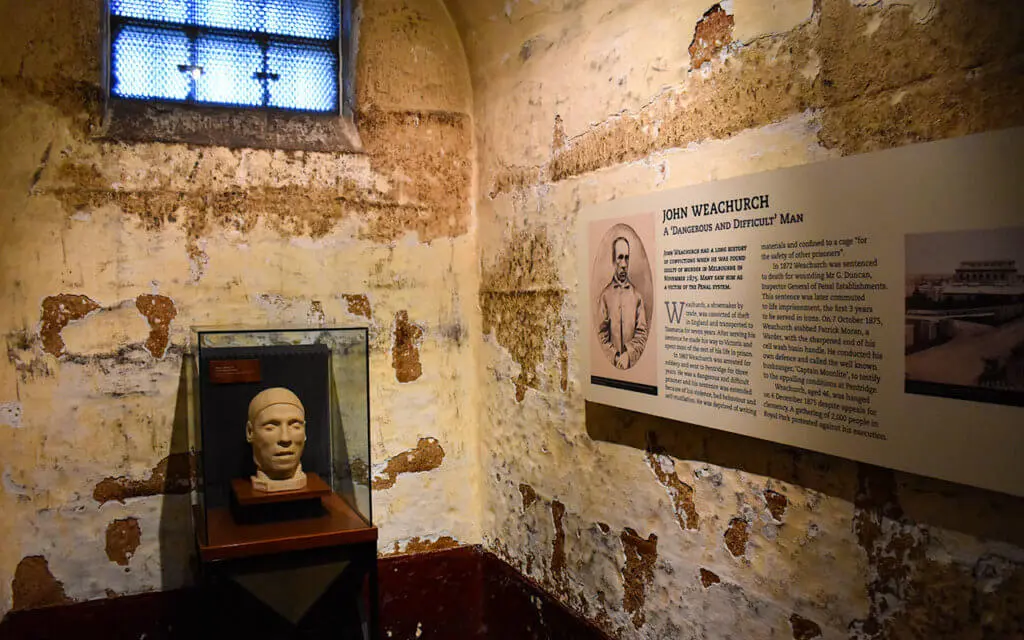
If prisoners behaved, they would be “promoted” to the second floor. Men would be assigned to hard labour, women would cook, sew, clean and some would work as domestic servants to the prison governor. Finally, trusted criminals could stay in communal cells on the third floor.
Visiting the Old Melbourne Gaol
The simplest way to visit one of the most interesting prisons in Australia is to purchase an entry ticket and visit at your own pace. A number of plaques and display give a thorough explanation of the various aspects of the jail and it’s a great way to soak up the atmosphere.
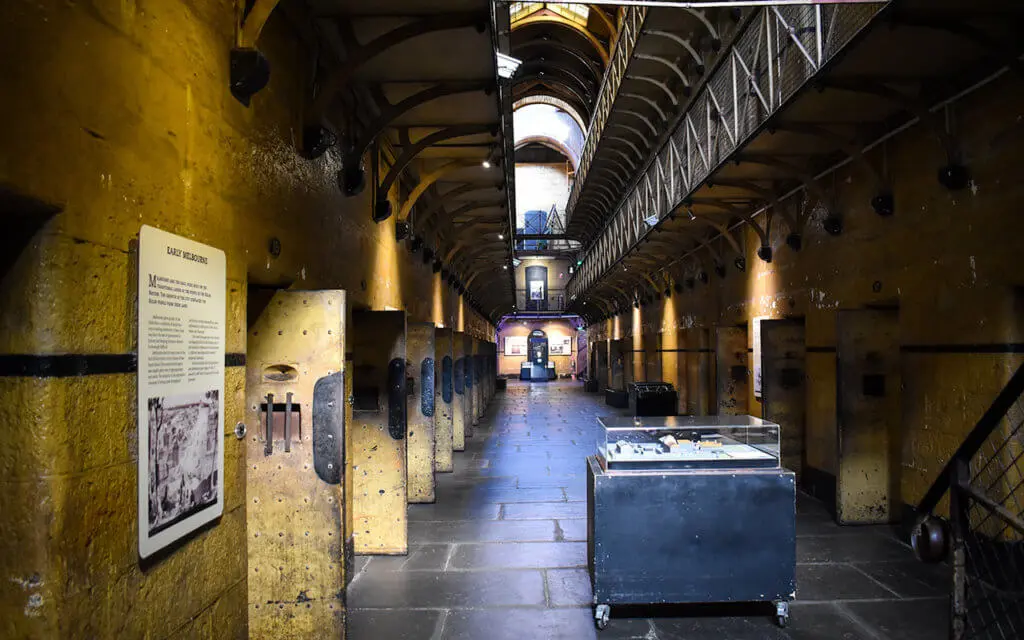
The place is dark and very still. Visitors are encouraged to keep quiet in order to respect the place. There is a strong echo, and anyone talking loudly or shouting would make too much noise.
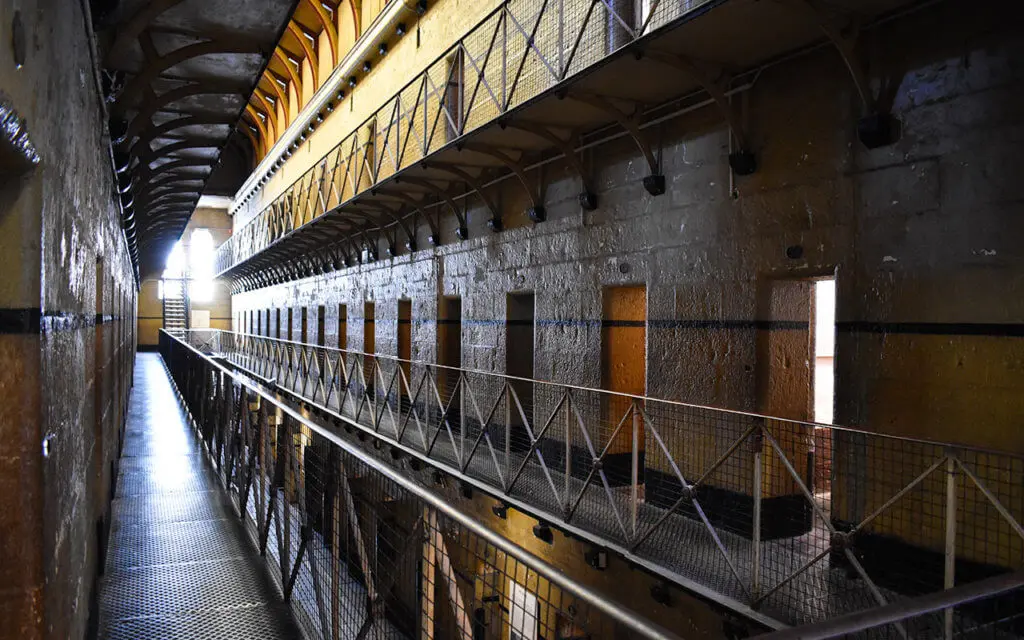
There is a beauty in this darkness, with the dim light reflecting on the polished bluestone, the cell doors have a sheen after decades of use. The gaol is a place of reflection and feels a little creepy at times, especially when you read about convict punishments. Indeed, visitors cannot help but reflect on the sheer misery and suffering experienced by the poor souls locked up in the gaol. Still, it’s one of the Melbourne highlights.
Old Melbourne Gaol Tours
There are a few options for your Melbourne gaol tour.
Old Melbourne Gaol Tickets
You can purchase tickets for the Old Melbourne Gaol and do the visit at your own pace. There is plenty of information on display to learn at your own pace.
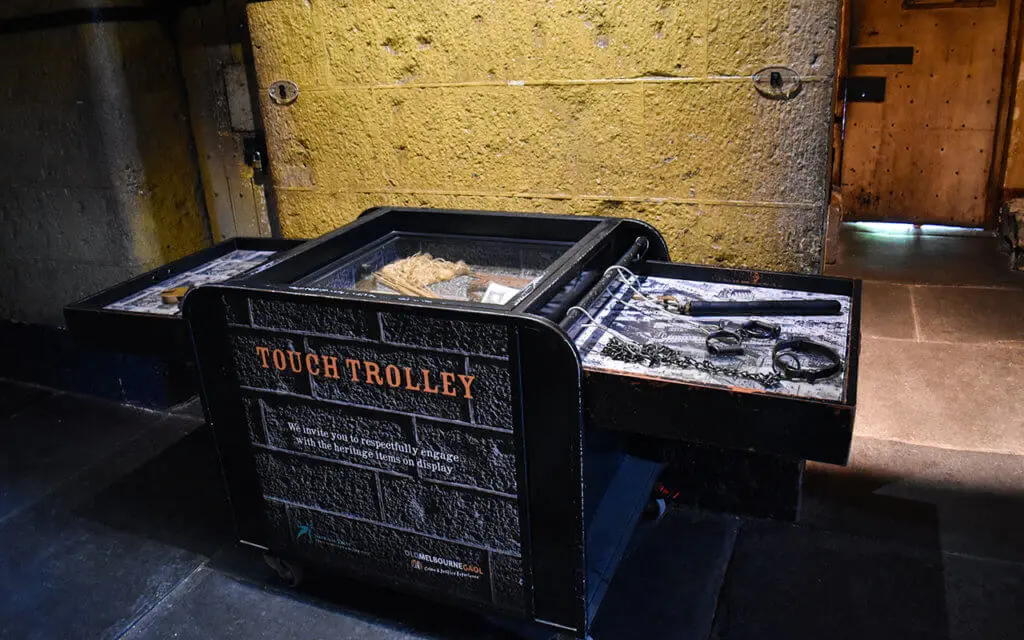
Watch house tours
The Watch house tour will give you a taste of what it’s like entering an Australian gaol in the old days.
Melbourne Gaol Ghost tours
If you are looking for things to do in Melbourne at night, why not get the thrill of a ghost tour? This one is actually in Pentridge Prison, which has some scary history!
Old Melbourne Gaol Executions
In the course of its history, the Old Melbourne Gaol saw 135 hangings, quite a significant number. Some of the stories told within the walls are truly sad, including the one of Colin Campbell Ross, wrongly convicted for the rape and murder of a 12-year old girl in 1921.
Over time, the gallows were set up in various areas of the prison, and eventually, a fixed gallows was installed below the octagon across the main axis of the prison block. It’s a damning presence, with a well used noose hanging off the main beam… And to think that this is where Ned Kelly hanged…
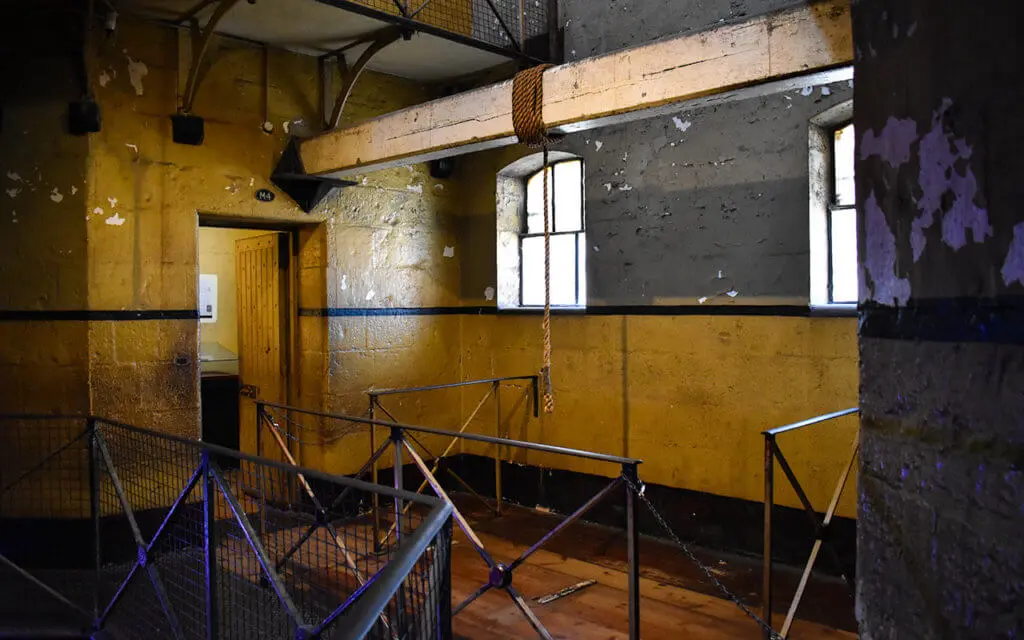
Corporal punishment was in use as a way to break difficult inmates and the flogging post is still in place. Other punishments involved time spent in irons, which you can experience on the touch trolley, and food deprivation.
If you are looking for your ancestry, you can research Australian convict records.
Death Masks
There are a number of death masks on display in the gaol. Those were taken shortly after execution as of the phrenological study of hanged felons. Phrenology was the study of the shape of the skull to identify personality traits, including criminal tendencies. It’s now considered a pseudoscience but it was very popular during the 19th century.
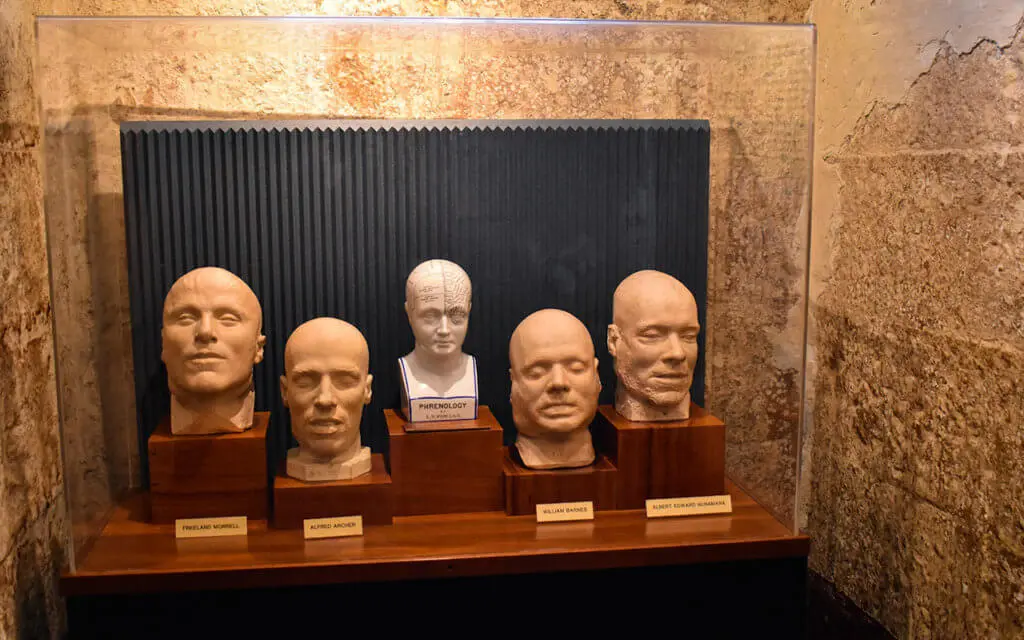
This “research” also included convicts in Australia. Left are some eerie face masks, most of them with a peaceful and sleepy expression.
Old Melbourne Gaol Closure
In 1870, a review recommended the closure of the gaol. Prison operation gradually slowed down until final closure in 1924. The prison was heritage-listed in 1957 and it is now an incredibly well preserved time machine.
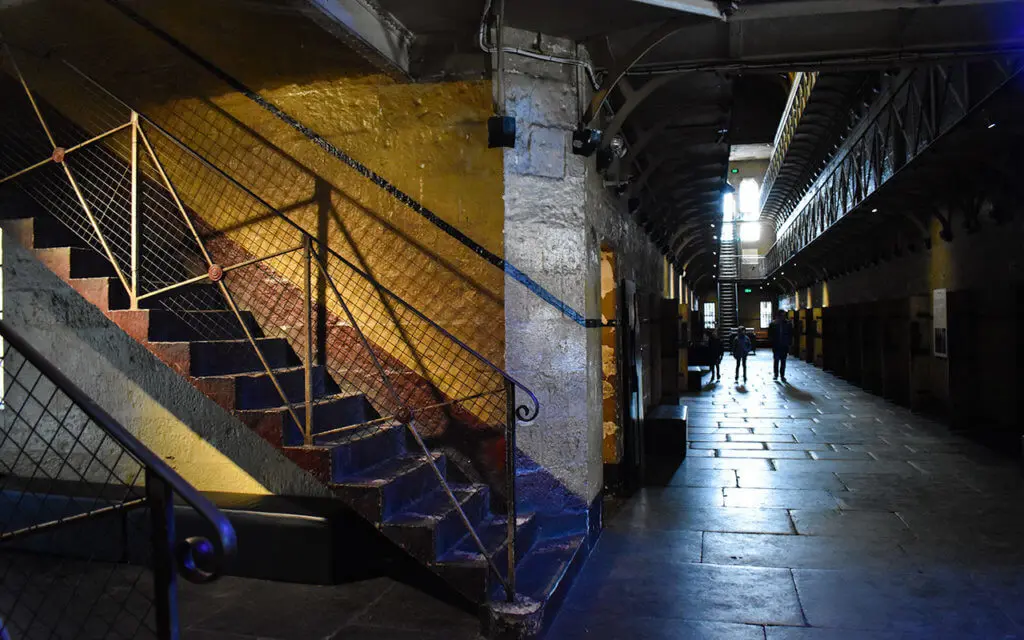
Ned Kelly, Bushranger
You can’t miss Australia’s most famous and most fascinating criminal when you visit the Old Melbourne Gaol. Ned Kelly, the famous bushranger hanged here in 1880, at the age of 25. Famous in his day, Ned Kelly is a complex and divisive character and an Australian cultural icon. His cell and some memorabilia are on display within the prison and as a visitor, you can’t help but feel a chill when seeing the gallows that saw him hang…

Ned Kelly was born in Australia to an Irish convict. After several brushes with the law and some time in prison for stealing horses, Ned Kelly was accused of trying to murder a policeman. When the police arrested his mother, Kelly and his gang fled into the bush.
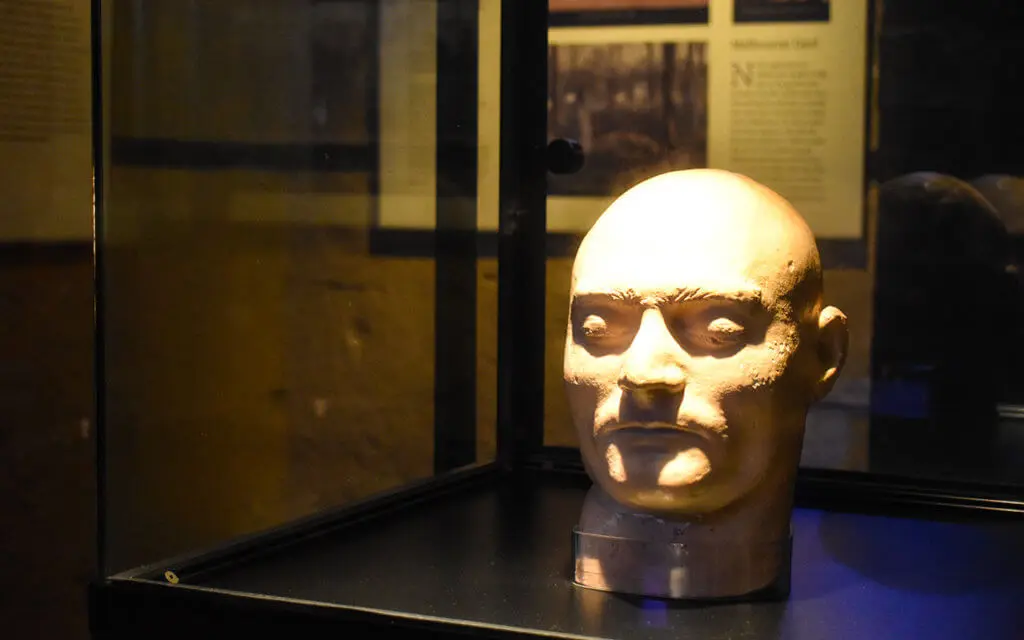
At that point, the Ned Kelly gang started committing bank robberies in the Victorian countryside and essentially became media personalities… The newspapers of the time helped create a “Robin Hood” persona, which is still the subject of much debate today.
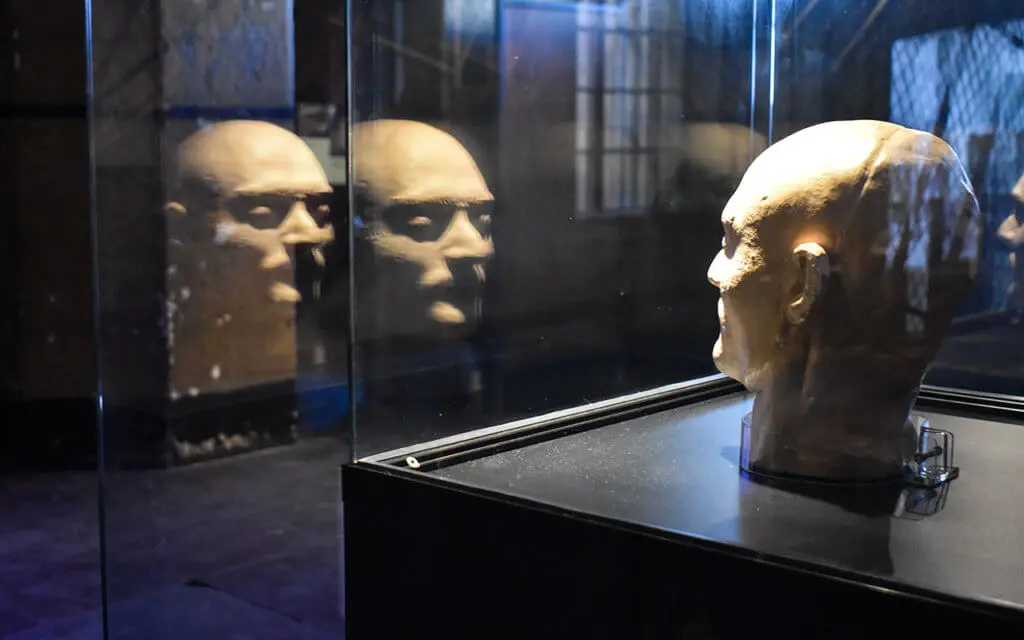
In 1878, a confrontation with the police at Stringybark Creek resulted in the death of three officers and Ned Kelly was declared an outlaw. His supporters denounced the harassment of his Irish family by the authorities. Kelly penned what became known as the “Jerilderie Letter”, a lengthy document in which he justified his increasingly criminal and violent activities. He denounced the pressure from the police and the Victorian government and even the British Empire. This manifesto has been the subject of much interpretation.

During his time on the run, Ned Kelly gave interviews to journalists and admired by women, becoming a figure of legend even before his death. Eventually, Ned Kelly’s last stand came when the police cornered Kelly and his gang near Glenrowan. After releasing some of their hostages, Kelly donned a homemade metal armour that would become his symbol and a firefight with the police ensued. Kelly survived the siege despite some severe injuries and was able to stand trial.
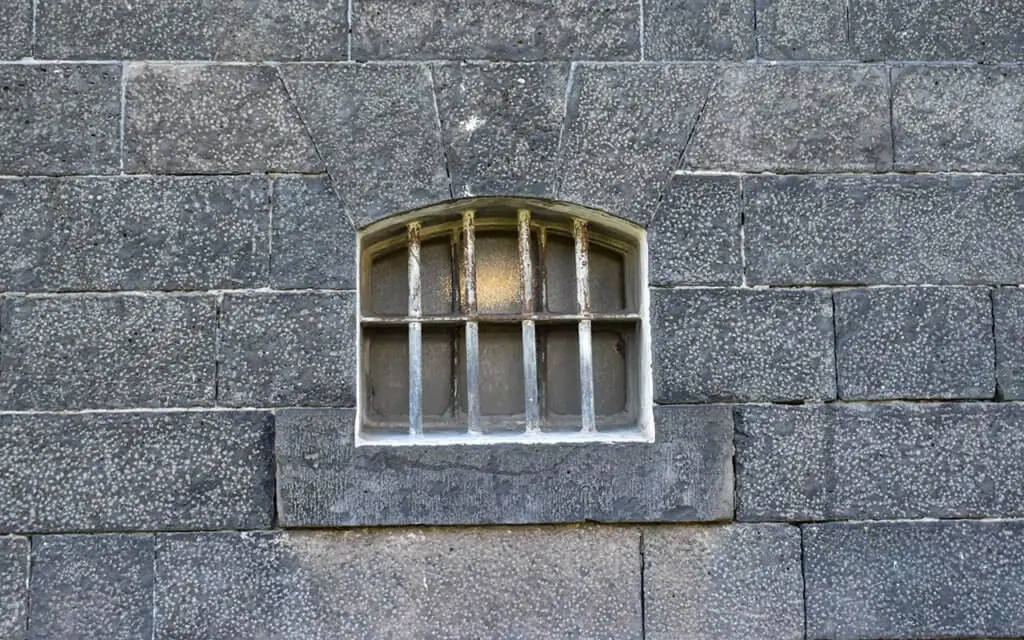
His execution took place on 11 November 1880. His death mask shows a resolute yet peaceful expression, as if he had accepted his fate. To this day, Kelly remains a divisive figure, some will see him as an Australian folk hero, a political revolutionary and a figure of Irish Catholic and working class resistance to British colonial rule. Others will simply brand him a horse thief and psychopathic cop killer…
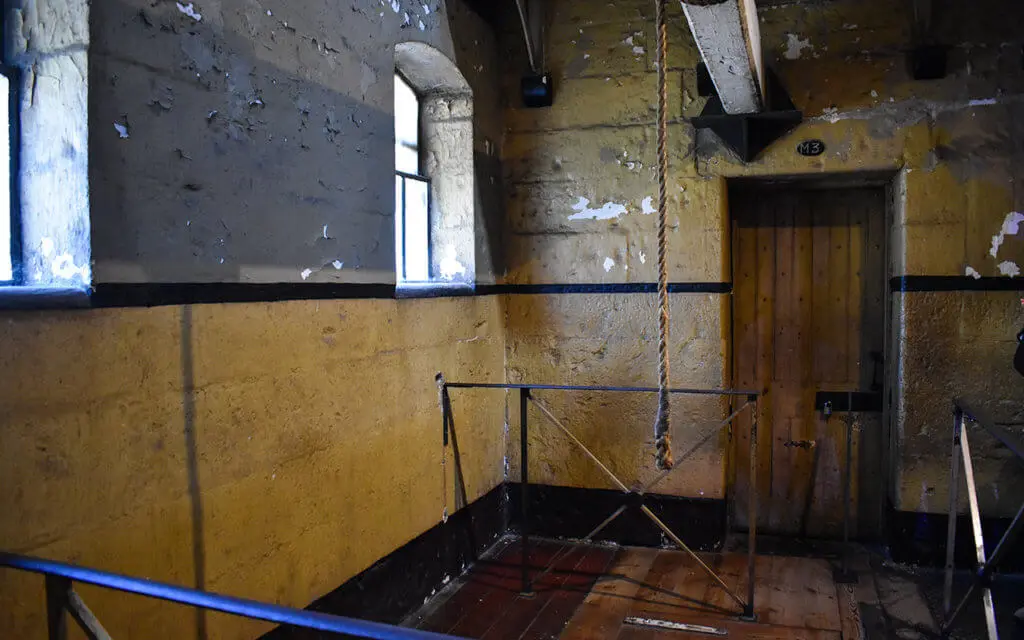
Regardless of whether you regard Ned Kelly as a hero, he is an historical figure you can’t miss when visiting Victoria. After all, Northeast Victoria is now “Kelly Country”… The Ned Kelly armor is now on display at the Melbourne Museum.
Australia’s Criminal Past
For many Australians fascinated by their criminal past or looking for facts about Ned Kelly, a visit to the Old Melbourne Gaol is a great learning experience. Few places in Melbourne tell stories of the past so vibrantly as the old gaol. If you want to learn more about Australia’s convict past, you may want to visit one of the eleven Australian Convict Sites.
Related Posts
2 Days in Melbourne
Victoria
Sovereign Hill
Victoria
Fremantle Prison Review
Have you experienced the Old Melbourne Gaol, what did you like about it? Tell me about is in the comments below.
Save these tips on visiting the Old Melbourne Gaol on Pinterest!
